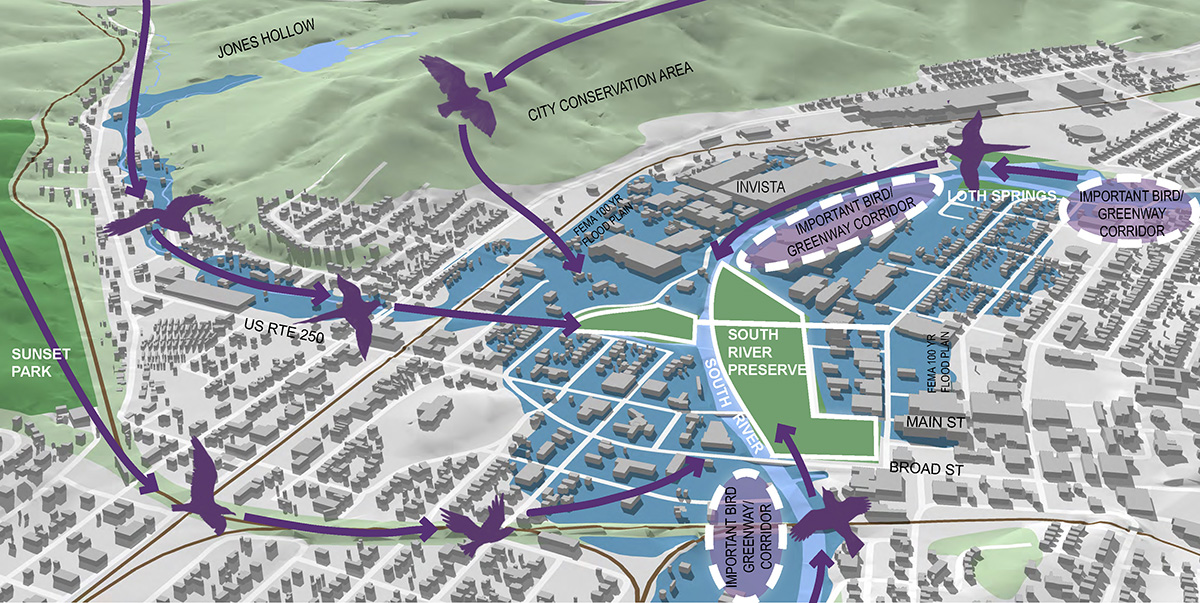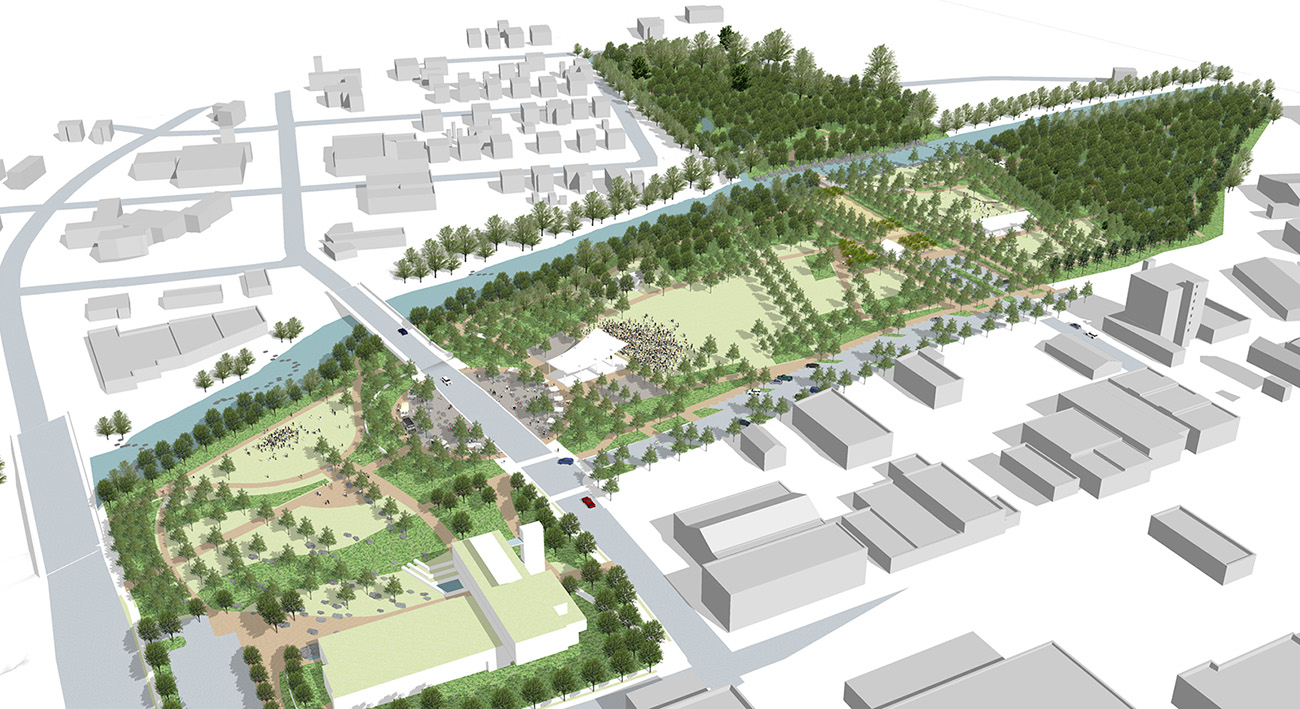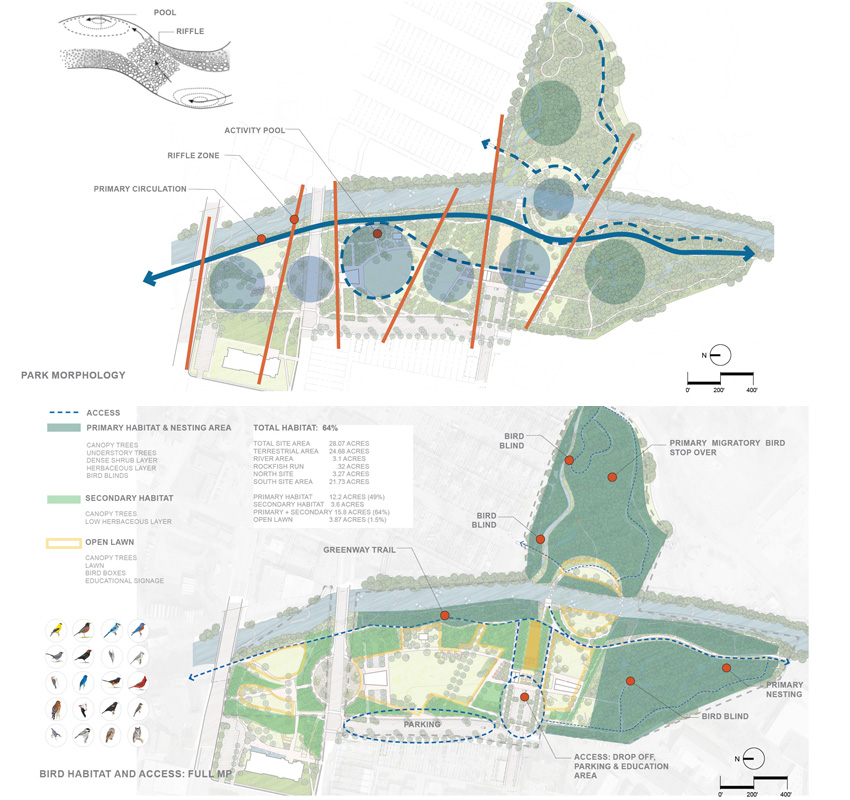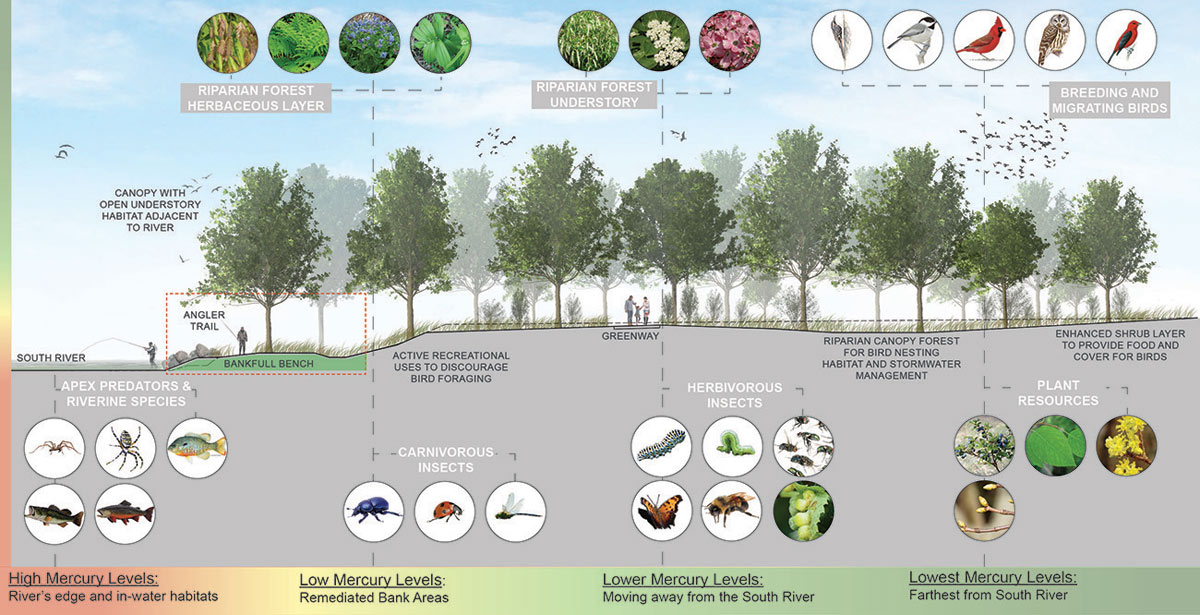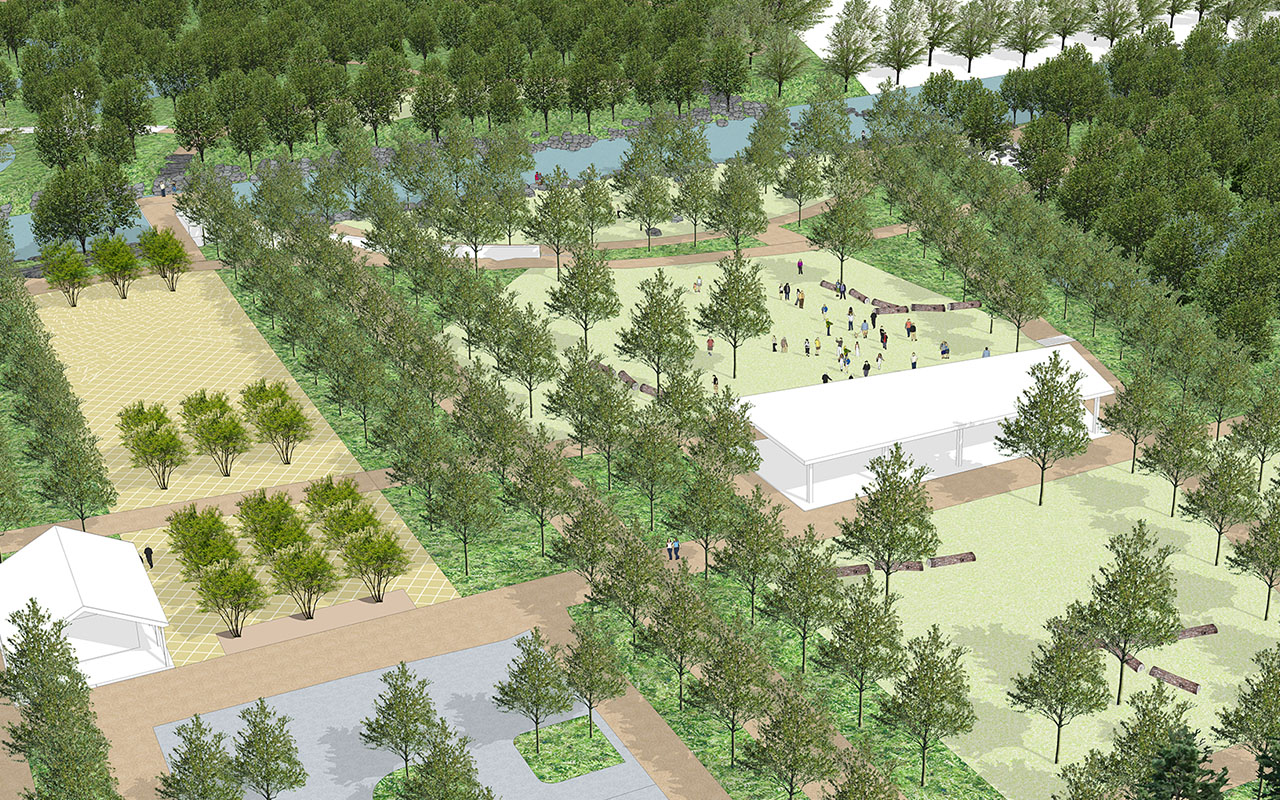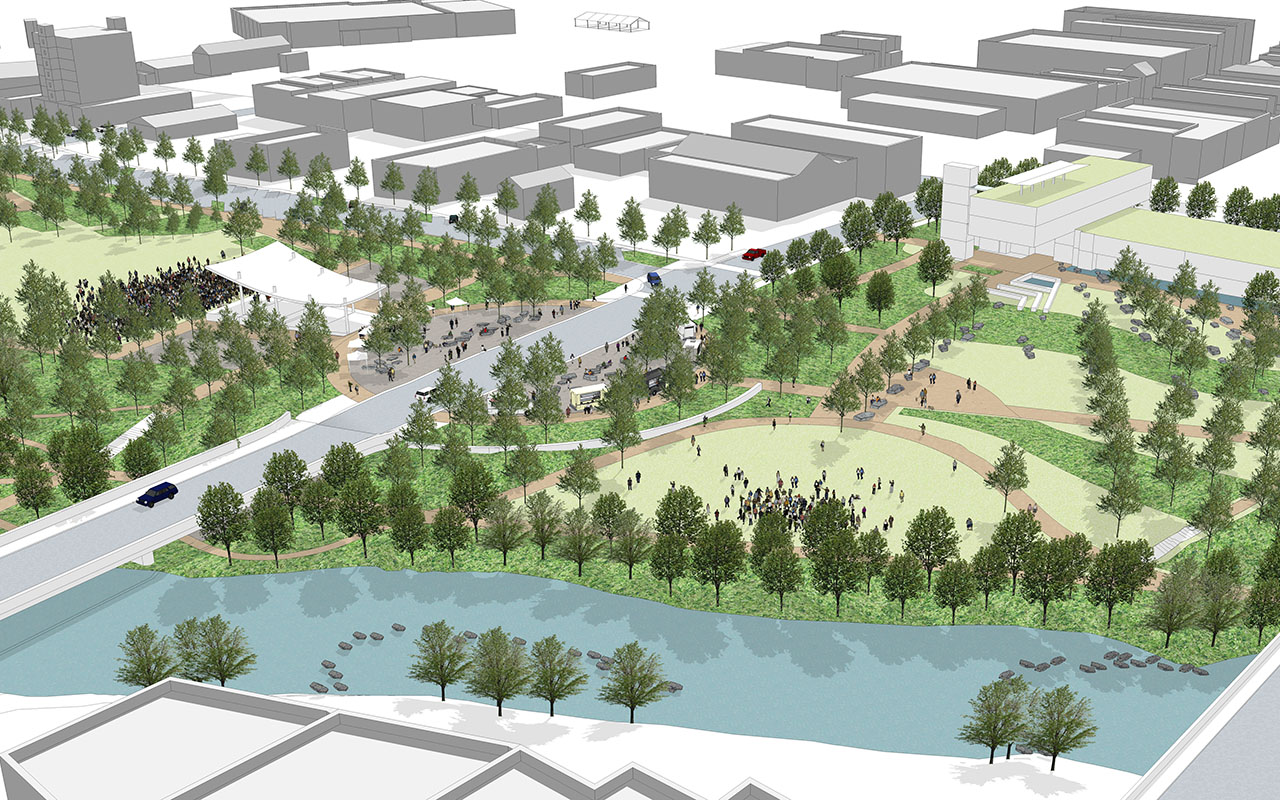Project Description
South River Preserve
The South River Preserve is located in downtown Waynesboro on a 28-acre brownfield site along the South River. From 1929 to 1950, the adjacent Dupont factory released large quantities of mercury, a potent neurotoxin, into the South River where it spread far downstream and accumulated in associated stream beds, riverbanks and floodplains. Funded largely by Virginia’s Natural Resource Damage Assessment and Restoration settlement with Dupont, this project artfully responds to complex and challenging environmental conditions to thoughtfully reconnect the City to its cultural history and river heritage.
The Master Plan proposes a transformative, science-guided design vision for creating full life-cycle migratory songbird habitat, restoring natural systems and native plant communities, enhancing water quality and the existing cold-water fishery, expanding recreational opportunities, and creating multi-purpose civic and park open spaces. The river flowing through a series of stream bed riffles and quiet pools inspired the park design. This idea translates into a linear series of spatial edges and activity areas that are connected by a riverfront greenway and form the organizational framework for the park.
Civic oriented open spaces and event facilities are concentrated toward Main Street in the park’s northern section. The multi-purpose North Lawn connects the existing amphitheater with the proposed Virginia Museum of Natural History through a series of layered open spaces and public gardens. The bird-nest shaped Main Street Market is a dynamic, pedestrian-oriented space designed to accommodate high-traffic event programming while also serving as a distinctive gateway element for downtown and the park. The City Event Pavilion faces the Great Lawn that stretches out along Race Avenue and anchors the open space system. Easily accessible from both the Piedmont and Valley Regions, these new event facilities are positioned to become popular destinations.
The urban grid extends into the park at Short Street and organizes vehicular infrastructure, an educational pavilion, a series of native plant gardens, and a pedestrian promenade that provides access to Discovery Hill and the River Overlook. A community pavilion is located to the side and embedded into a picnic and nature play area. Steep riverbanks are pulled back to create the dynamic River Theater – its semi-circular lawn slopes gently toward the river and invites people to gather and engage with the rocky terraced edge and the flowing water.
The full life cycle songbird conservation strategy is based on providing forest canopy nesting and migratory stop-over habitat throughout the park; promoting habitat connectivity, negating toxic site conditions, and offering high-quality birding and educational opportunities. Science has long known that methylated mercury can quickly enter the natural food chains and harmfully bio-concentrate in birds, wildlife and humans that eat predatory fish. Only recently however, research at the South River uncovered that mercury also bio-concentrates in migratory song birds because they feed close to the river on emergent aquatic insects and predatory spiders. The park design places people and recreational activities at the river’s edge to encourage birds to safely forage high in canopy trees away from the river on vegetarian organisms, such as caterpillars, that don’t concentrate much mercury. The large blocks of forest in the East and West Woods are created as quiet refuges where clean water will attract birds for observation and study.
Stormwater management is largely addressed by implementing a green infrastructure strategy – impervious surfaces and managed turf are minimized, large areas of riparian floodplain are restored, and the landscape design framework consists of wildlife forage and native plant habitat areas.

